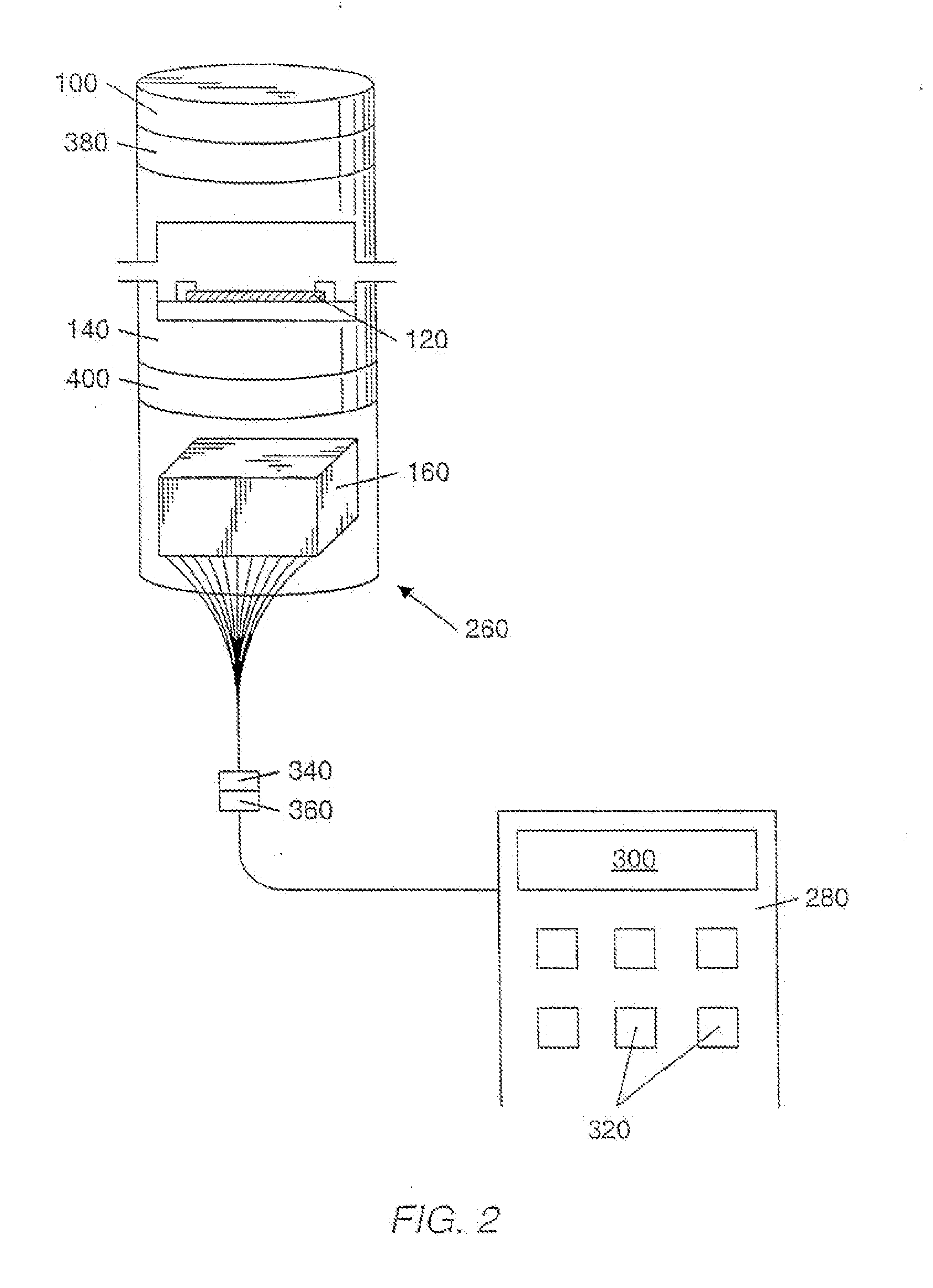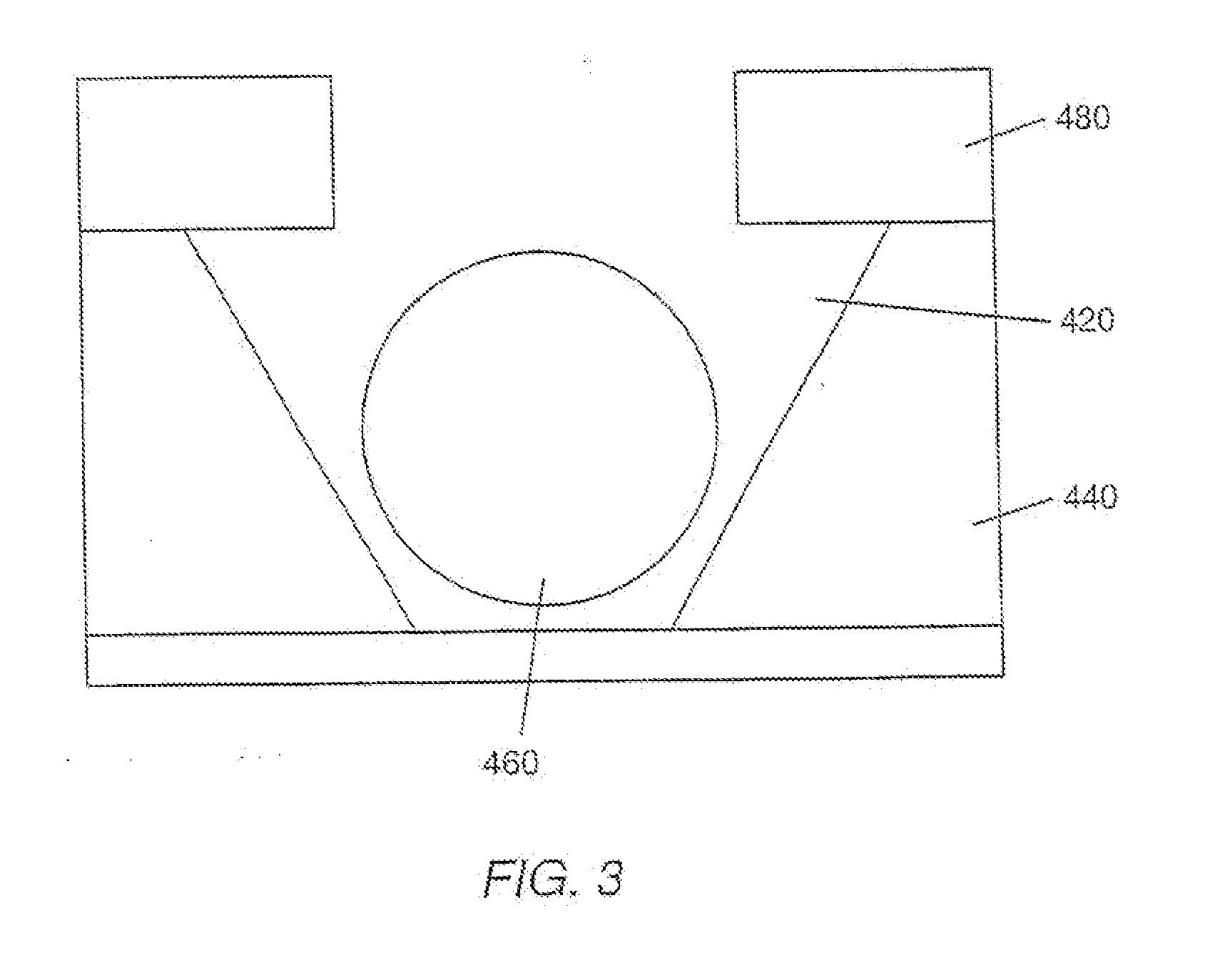Multi-Shell Microspheres With Integrated Chromatographic And Detection Layers For Use In Array Sensors
a technology of array sensors and microspheres, applied in the field of detection of analytes in fluids, can solve the problems of few, if any, prior works combining micro-chromatographic technologies with array-based sensing concepts
- Summary
- Abstract
- Description
- Claims
- Application Information
AI Technical Summary
Benefits of technology
Problems solved by technology
Method used
Image
Examples
examples
Materials
[0365]Polystyrene—polyethylene glycol (PS-PEG) graft copolymer microspheres (=130 μm in diameter when dry and 230 μm when hydrated) were purchased from Novabiochcm. Normal amine activation substitution levels for these particles were between 0.2 and 0.4 mmol / g. Commercial-grade reagents were purchased from Aldrich and used without further purification except as indicated below. Fluorescein isothiocyanate was purchased from Molecular Probes. All solvents were purchased from EM Science and those used for solid-phase synthesis were dried over molecular sieves. Methanol was distilled from magnesium turnings.
[0366]Immunoassays were performed using carbonyl diimidazole (CAI) activated Trisacryl® GF-2000 available from Pierce Chemical (Rockford, Ill.). The particle size for this support ranged between 40 and 80 μm. The reported CDI activation level was >50 μmoles / mL gel. Viral antigen and monoclonal antibody reagents were purchased from Biodesign International (Kennebunk, Me.). Rh...
PUM
| Property | Measurement | Unit |
|---|---|---|
| pressure | aaaaa | aaaaa |
| thickness | aaaaa | aaaaa |
| thickness | aaaaa | aaaaa |
Abstract
Description
Claims
Application Information
 Login to View More
Login to View More - R&D
- Intellectual Property
- Life Sciences
- Materials
- Tech Scout
- Unparalleled Data Quality
- Higher Quality Content
- 60% Fewer Hallucinations
Browse by: Latest US Patents, China's latest patents, Technical Efficacy Thesaurus, Application Domain, Technology Topic, Popular Technical Reports.
© 2025 PatSnap. All rights reserved.Legal|Privacy policy|Modern Slavery Act Transparency Statement|Sitemap|About US| Contact US: help@patsnap.com



